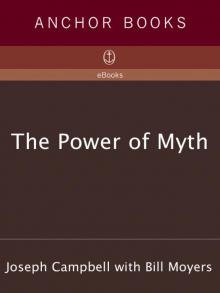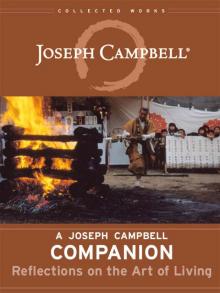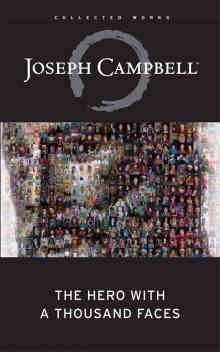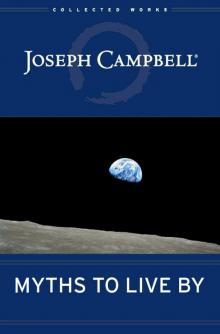- Home
- Joseph Campbell
The Hero with a Thousand Faces Page 3
The Hero with a Thousand Faces Read online
Page 3
The story is told, for example, of the great Minos, king of the island empire of Crete in the period of its commercial supremacy: how he hired the celebrated artist-craftsman Daedalus to invent and construct for him a labyrinth, in which to hide something of which the palace was at once ashamed and afraid. For there was a monster on the premises — which had been born to Pasiphaë, the queen. Minos, the king, had been busy, it is said, with important wars to protect the trade routes; and meanwhile Pasiphaë had been seduced by a magnificent, snow-white, seaborn bull. It had been nothing worse, really, than what Minos’ own mother had allowed to happen: Minos’ mother was Europa, and it is well known that she was carried by a bull to Crete. The bull had been the god Zeus, and the honored son of that sacred union was Minos himself — now everywhere respected and gladly served. How then could Pasiphaë have known that the fruit of her own indiscretion would be a monster: this little son with human body but the head and tail of a bull?
Figure 3. Sileni and Maenads (black-figure amphora, Hellenic, Sicily, c. 500–450 b.c.)
Society has blamed the queen greatly; but the king was not unconscious of his own share of guilt. The bull in question had been sent by the god Poseidon, long ago, when Minos was contending with his brothers for the throne. Minos had asserted that the throne was his, by divine right, and had prayed the god to send up a bull out of the sea, as a sign; and he had sealed the prayer with a vow to sacrifice the animal immediately, as an offering and symbol of service. The bull had appeared, and Minos took the throne; but when he beheld the majesty of the beast that had been sent and thought what an advantage it would be to possess such a specimen, he determined to risk a merchant’s substitution — of which he supposed the god would take no great account. Offering on Poseidon’s altar the finest white bull that he owned, he added the other to his herd.
The Cretan empire had greatly prospered under the sensible jurisdiction of this celebrated lawgiver and model of public virtue. Knossos, the capital city, became the luxurious, elegant center of the leading commercial power of the civilized world. The Cretan fleets went out to every isle and harbor of the Mediterranean; Cretan ware was prized in Babylonia and Egypt. The bold little ships even broke through the Gates of Hercules to the open ocean, coasting then northward to take the gold of Ireland and the tin of Cornwall,[12] as well as southward, around the bulge of Senegal, to remote Yorubaland and the distant marts of ivory, gold, and slaves.[13]
But at home, the queen had been inspired by Poseidon with an ungovernable passion for the bull. And she had prevailed upon her husband’s artist-craftsman, the peerless Daedalus, to frame for her a wooden cow that would deceive the bull — into which she eagerly entered; and the bull was deceived. She bore her monster, which, in due time, began to become a danger. And so Daedalus again was summoned, this time by the king, to construct a tremendous labyrinthine enclosure, with blind passages, in which to hide the thing away. So deceptive was the invention, that Daedalus himself, when he had finished it, was scarcely able to find his way back to the entrance. Therein the Minotaur was settled; and he was fed, thereafter, on groups of living youths and maidens, carried as tribute from the conquered nations within the Cretan domain.[14]
Thus according to the ancient legend, the primary fault was not the queen’s but the king’s; and he could not really blame her, for he knew what he had done. He had converted a public event to personal gain, whereas the whole sense of his investiture as king had been that he was no longer a mere private person. The return of the bull should have symbolized his absolutely selfless submission to the functions of his role. The retaining of it represented, on the other hand, an impulse to egocentric self-aggrandizement. And so the king “by the grace of God” became the dangerous tyrant Holdfast — out for himself. Just as the traditional rites of passage used to teach the individual to die to the past and be reborn to the future, so the great ceremonials of investiture divested him of his private character and clothed him in the mantle of his vocation. Such was the ideal, whether the man was a craftsman or a king. By the sacrilege of the refusal of the rite, however, the individual cut himself as a unit off from the larger unit of the whole community: and so the One was broken into the many, and these then battled each other — each out for himself — and could be governed only by force.
The figure of the tyrant-monster is known to the mythologies, folk traditions, legends, and even nightmares of the world; and his characteristics are everywhere essentially the same. He is the hoarder of the general benefit. He is the monster avid for the greedy rights of “my and mine.” The havoc wrought by him is described in mythology and fairy tale as being universal throughout his domain. This may be no more than his household, his own tortured psyche, or the lives that he blights with the touch of his friendship and assistance; or it may amount to the extent of his civilization. The inflated ego of the tyrant is a curse to himself and his world — no matter how his affairs may seem to prosper. Self-terrorized, fear-haunted, alert at every hand to meet and battle back the anticipated aggressions of his environment, which are primarily the reflections of the uncontrollable impulses to acquisition within himself, the giant of self-achieved independence is the world’s messenger of disaster, even though, in his mind, he may entertain himself with humane intentions. Wherever he sets his hand there is a cry (if not from the housetops, then — more miserably — within every heart): a cry for the redeeming hero, the carrier of the shining blade, whose blow, whose touch, whose existence, will liberate the land.
Here one can neither stand nor lie nor sit
There is not even silence in the mountains
But dry sterile thunder without rain
There is not even solitude in the mountains
But red sullen faces sneer and snarl
From doors of mudcracked houses[15]
The hero is the man of self-achieved submission. But submission to what? That precisely is the riddle that today we have to ask ourselves and that it is everywhere the primary virtue and historic deed of the hero to have solved. As Professor Arnold J. Toynbee indicates in his six-volume study of the laws of the rise and disintegration of civilizations,[16] schism in the soul, schism in the body social, will not be resolved by any scheme of return to the good old days (archaism), or by programs guaranteed to render an ideal projected future (futurism), or even by the most realistic, hardheaded work to weld together again the deteriorating elements. Only birth can conquer death — the birth, not of the old thing again, but of something new. Within the soul, within the body social, there must be — if we are to experience long survival — a continuous “recurrence of birth” (palingenesia) to nullify the unremitting recurrences of death. For it is by means of our own victories, if we are not regenerated, that the work of Nemesis is wrought: doom breaks from the shell of our very virtue. Peace then is a snare; war is a snare; change is a snare; permanence a snare. When our day is come for the victory of death, death closes in; there is nothing we can do, except be crucified — and resurrected; dismembered totally, and then reborn.
Theseus, the hero-slayer of the Minotaur, entered Crete from without, as the symbol and arm of the rising civilization of the Greeks. That was the new and living thing. But it is possible also for the principle of regeneration to be sought and found within the very walls of the tyrant’s empire itself. Professor Toynbee uses the terms “detachment” and “transfiguration” to describe the crisis by which the higher spiritual dimension is attained that makes possible the resumption of the work of creation. The first step, detachment or withdrawal, consists in a radical transfer of emphasis from the external to the internal world, macro- to microcosm, a retreat from the desperations of the waste land to the peace of the everlasting realm that is within. But this realm, as we know from psychoanalysis, is precisely the infantile unconscious. It is the realm that we enter in sleep. We carry it within ourselves forever. All the ogres and secret helpers of our nursery are there, all the magic of childhood. And more important, all the life-potenti
alities that we never managed to bring to adult realization, those other portions of ourself, are there; for such golden seeds do not die. If only a portion of that lost totality could be dredged up into the light of day, we should experience a marvelous expansion of our powers, a vivid renewal of life. We should tower in stature. Moreover, if we could dredge up something forgotten not only by ourselves but by our whole generation or our entire civilization, we should become indeed the boon-bringer, the culture hero of the day — a personage of not only local but world historical moment. In a word: the first work of the hero is to retreat from the world scene of secondary effects to those causal zones of the psyche where the difficulties really reside, and there to clarify the difficulties, eradicate them in his own case (i.e., give battle to the nursery demons of his local culture) and break through to the undistorted, direct experience and assimilation of what C.G. Jung has called “the archetypal images.”[17] This is the process known to Hindu and Buddhist philosophy as viveka, “discrimination.”
The archetypes to be discovered and assimilated are precisely those that have inspired, throughout the annals of human culture, the basic images of ritual, mythology, and vision. These “Eternal Ones of the Dream”[25] are not to be confused with the personally modified symbolic figures that appear in nightmare and madness to the still tormented individual. Dream is the personalized myth, myth the depersonalized dream; both myth and dream are symbolic in the same general way of the dynamics of the psyche. But in the dream the forms are quirked by the peculiar troubles of the dreamer, whereas in myth the problems and solutions shown are directly valid for all mankind.
As Dr. Jung points out, the theory of the archetypes is by no means his own invention.[18]
Compare Nietzsche: “In our sleep and in our dreams we pass through the whole thought of earlier humanity. I mean, in the same way that man reasons in his dreams, he reasoned when in the waking state many thousands of years....The dream carries us back into earlier states of human culture, and affords us a means of understanding it better.”[19]
Compare Adolf Bastian’s theory of the ethnic “Elementary Ideas” (Elementargedanken), which, in their primal psychic character (corresponding to the Stoic Logoi spermatikoi), should be regarded as “the spiritual (or psychic) germinal dispositions out of which the whole social structure has been developed organically,” and, as such, should serve as bases of inductive research.[20]
Compare Franz Boas: “Since Waitz’s thorough discussion of the question of the unity of the human species, there can be no doubt that in the main the mental characteristics of man are the same all over the world....Bastian was led to speak of the appalling monotony of the fundamental ideas of mankind all over the globe....Certain patterns of associated ideas may be recognized in all types of culture.”[21]
Compare Sir James G. Frazer: “We need not, with some enquirers in ancient and modern times, suppose that the Western peoples borrowed from the older civilization of the Orient the conception of the Dying and Reviving God, together with the solemn ritual, in which that conception was dramatically set forth before the eyes of the worshippers. More probably the resemblance which may be traced in this respect between the religions of the East and West is no more than what we commonly, though incorrectly, call a fortuitous coincidence, the effect of similar causes acting alike on the similar constitution of the human mind in different countries and under different skies.”[22]
Compare Sigmund Freud: “I recognized the presence of symbolism in dreams from the very beginning. But it was only by degrees and as my experience increased that I arrived at a full appreciation of its extent and significance, and I did so under the influence of...Wilhelm Stekel....Stekel arrived at his interpretations of symbols by way of intuition, thanks to a peculiar gift for the direct understanding of them....Advances in psycho-analytic experience have brought to our notice patients who have shown a direct understanding of dream-symbolism of this kind to a surprising extent....This symbolism is not peculiar to dreams, but is characteristic of unconscious ideation, in particular among the people, and it is to be found in folklore, and in popular myths, legends, linguistic idioms, proverbial wisdom and current jokes, to a more complete extent than in dreams.”[23]
Dr. Jung points out that he has borrowed his term archetype from classic sources: Cicero, Pliny, the Corpus Hermeticum, Augustine, etc.[24] Bastian notes the correspondence of his own theory of “Elementary Ideas” with the Stoic concept of the Logoi spermatikoi. The tradition of the “subjectively known forms” (Sanskrit: antarjñeya-rūpa) is, in fact, coextensive with the tradition of myth, and is the key to the understanding and use of mythological images — as will appear abundantly in the following chapters.
Figure 4. Minotauromachy (red-figure krater, Greece, c. 470 b.c.)
The hero, therefore, is the man or woman who has been able to battle past his personal and local historical limitations to the generally valid, normally human forms. Such a one’s visions, ideas, and inspirations come pristine from the primary springs of human life and thought. Hence they are eloquent, not of the present, disintegrating society and psyche, but of the unquenched source through which society is reborn. The hero has died as a modern man; but as eternal man — perfected, unspecific, universal man — he has been reborn. His second solemn task and deed therefore (as Toynbee declares and as all the mythologies of mankind indicate) is to return then to us, transfigured, and teach the lesson he has learned of life renewed.
It must be noted against Professor Toynbee, however, that he seriously misrepresents the mythological scene when he advertises Christianity as the only religion teaching this second task. All religions teach it, as do all mythologies and folk traditions everywhere. Professor Toynbee arrives at his misconstruction by way of a trite and incorrect interpretation of the Oriental ideas of nirvāṇa, Buddha, and Bodhisattva; then contrasting these ideals, as he misinterprets them, with a very sophisticated rereading of the Christian idea of the City of God. This is what leads him to the error of supposing that the salvation of the present world-situation might lie in a return to the arms of the Roman Catholic church.
“I was walking alone around the upper end of a large city, through slummy, muddy streets lined with hard little houses,” writes a modern woman, describing a dream that she has had.
I did not know where I was, but liked the exploring. I chose one street which was terribly muddy and led across what must have been an open sewer. I followed along between rows of shanties and then discovered a little river flowing between me and some high, firm ground where there was a paved street. This was a nice, perfectly clear river, flowing over grass. I could see the grass moving under the water. There was no way to cross, so I went to a little house and asked for a boat. A man there said of course he could help me cross. He brought out a small wooden box which he put on the edge of the river and I saw at once that with this box I could easily jump across. I knew all danger was over and I wanted to reward the man richly.
In thinking of this dream I have a distinct feeling that I did not have to go where I was at all but could have chosen a comfortable walk along paved streets. I had gone to the squalid and muddy district because I preferred adventure, and, having begun, I had to go on....When I think of how persistently I kept going straight ahead in the dream, it seems as though I must have known there was something fine ahead, like that lovely, grassy river and the secure, high, paved road beyond. Thinking of it in those terms, it is like a determination to be born — or rather to be born again — in a sort of spiritual sense. Perhaps some of us have to go through dark and devious ways before we can find the river of peace or the highroad to the soul’s destination.[26]
The dreamer is a distinguished operatic artist, and, like all who have elected to follow, not the safely marked general highways of the day, but the adventure of the special, dimly audible call that comes to those whose ears are open within as well as without, she has had to make her way alone, through difficulties not commonly encountered, “t
hrough slummy, muddy streets”; she has known the dark night of the soul, Dante’s “dark wood, midway in the journey of our life,” and the sorrows of the pits of hell:
Through me is the way into the woeful city,
Through me is the way into eternal woe,
Through me is the way among the Lost People.[27]
It is remarkable that in this dream the basic outline of the universal mythological formula of the adventure of the hero is reproduced, to the detail. These deeply significant motifs of the perils, obstacles, and good fortunes of the way, we shall find inflected through the following pages in a hundred forms. The crossing first of the open sewer,* then of the perfectly clear river flowing over grass,* the appearance of the willing helper at the critical moment,* and the high, firm ground beyond the final stream (the Earthly Paradise, the Land over Jordan):* these are the everlastingly recurrent themes of the wonderful song of the soul’s high adventure. And each who has dared to harken to and follow the secret call has known the perils of the dangerous, solitary transit:
A sharpened edge of a razor, hard to traverse,
A difficult path is this — poets declare![28]
The dreamer is assisted across the water by the gift of a small wooden box, which takes the place, in this dream, of the more usual skiff or bridge. This is a symbol of her own special talent and virtue, by which she has been ferried across the waters of the world. The dreamer has supplied us with no account of her associations, so that we do not know what special contents the box would have revealed; but it is certainly a variety of Pandora’s box — that divine gift of the gods to beautiful woman, filled with the seeds of all the trouble and blessings of existence, but also provided with the sustaining virtue, hope. By this, the dreamer crosses to the other shore. And by a like miracle, so will each whose work is the difficult, dangerous task of self-discovery and self-development be portered across the ocean of life.

 The Power of Myth
The Power of Myth A Joseph Campbell Companion: Reflections on the Art of Living
A Joseph Campbell Companion: Reflections on the Art of Living The Hero with a Thousand Faces
The Hero with a Thousand Faces Myths to Live By
Myths to Live By A Joseph Campbell Companion: Reflections on the Art of Living (Collected Works of Joseph Campbell)
A Joseph Campbell Companion: Reflections on the Art of Living (Collected Works of Joseph Campbell)